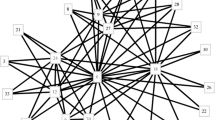We prove that coloring a 3-uniform 2-colorable hypergraph with c colors is NP-hard for any constant c. The best known algorithm [20] colors such a graph using O(n 1/5) colors. Our result immediately implies that for any constants k ≥ 3 and c 2 > c 1 > 1, coloring a k-uniform c 1-colorable hypergraph with c 2 colors is NP-hard; the case k = 2, however, remains wide open.
This is the first hardness result for approximately-coloring a 3-uniform hypergraph that is colorable with a constant number of colors. For k ≥ 4 such a result has been shown by [14], who also discussed the inherent difference between the k = 3 case and k ≥ 4.
Our proof presents a new connection between the Long-Code and the Kneser graph, and relies on the high chromatic numbers of the Kneser graph [19,22] and the Schrijver graph [26]. We prove a certain maximization variant of the Kneser conjecture, namely that any coloring of the Kneser graph by fewer colors than its chromatic number, has ‘many’ non-monochromatic edges.
Similar content being viewed by others
Author information
Authors and Affiliations
Corresponding author
Additional information
* Research supported by NSF grant CCR-9987845.
† Supported by an Alon Fellowship and by NSF grant CCR-9987845.
‡ Work supported in part by NSF grants CCF-9988526 and DMS 9729992, and the State of New Jersery.
Rights and permissions
About this article
Cite this article
Dinur*, I., Regev†, O. & Smyth‡, C. The Hardness of 3-Uniform Hypergraph Coloring. Combinatorica 25, 519–535 (2005). https://doi.org/10.1007/s00493-005-0032-4
Received:
Issue Date:
DOI: https://doi.org/10.1007/s00493-005-0032-4




